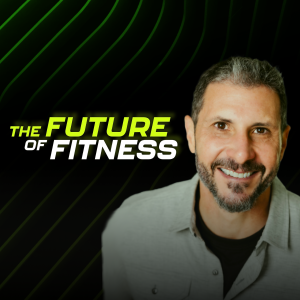
Today, I have guest Mel Tempest talking to me about the fitness industry; how she saw an opportunity 17 years ago and grabbed it with both hands.
We discuss the ever-changing market of fitness, some of the struggles it faces and what the future holds for gym owners.
Mel started a health club in 2003 and is constantly on the hunt for new ideas and opportunities to make her club a safe, comfortable environment for everyone. While being an event speaker and podcaster.
Tell us about your journey in the crazy world of fitness (01:14)
- Mel explains she opened up the club in 2003 after a mentor told her that she would never aspire to be anything more than a circuit instructor.
- She was in her mid 30’s and wanted to be more than a real estate agent. She wanted to be a gym instructor. She had no real experience, but along with her husband decided to open a gym anyway.
- Their first club was in a 450 square meter church hall. It was having numerous people come up to her and telling her that they were looking for a non-intimidating environment, that made Mel realize she needed to change her business model.
- She’s been changing her business model for the past 17 years to meet the demographic in her community.
- 17 years later, and Mel reports that they are still going strong in an 1800 square meter facility of their own. And their goal remains the same; to create a safe, comfortable environment for members.
You said you shifted the way you did business to fit your demographic. Expand on that? (04:15)
- Mel says the first thing she banned in her clubs were crop-tops. Trainers were to wear regular shirts at all times.
- She tried to create a less intimidating environment by using her own staff as an advertisement for her business, rather than the image set by the media. She feels the graphics in the media were intimidating.
- For a larger person, walking into a club where everyone is wearing crop tops and tank tops would be uncomfortable. Her aim was and has been for 17 years, to make the club a safe place for everyone.
- For some members, coming to the club is the best part of their day. So she pays attention to the small things like greeting people and knowing their names.
What expectations did you have for your podcast? (10:08)
- Mel says she wanted to interview people that she felt would help the industry, and she thought it was a simpler way of getting the knowledge to other club owners.
- Too much focus is placed on high and mid-level achievers, so entry-level businesses are left behind; that became her target market.
- These could include new businesses or business owners that have been in the industry for 10 to 15 years but are frightened of developing technology. Her goal was to assist those who are too afraid to ask for help.
- Their next step was getting the right speakers for the show. They have been very fortunate so far, and they are currently standing strong at 860 000 hits.
- She knows they are sharing the right information, as people approach her on a regular basis to tell her how much her knowledge has helped them.
How do you look for collaborations in this industry? (20:03)
- Mel states that her main focus is to look for people that can offer something that she can’t, and if she can’t do something, she will get someone who can.
- She uses her female leaders as an example, saying that some of them excel in speaking about mindfulness and self-care. This, however, is not her strong suit.
- Those in the health and wellness industry have a responsibility in creating positive mental health.
- If you do not treat your peers with respect, it will have a negative mental impact on them. We don’t want anyone in the industry thinking that they are not valued as a speaker or coach.
- Everyone in the industry must be held accountable for the impact they have on their peers and teams. Everyone has to treat each other as part of a team, rather than the competition.
What are some of the biggest opportunities in the fitness industry? (23:25)
- Mel makes a great point in arguing that those who do not grow with technology will get left behind. There are new products coming out on a regular basis, products that are meant to make life easier - like running your front desk.
- People over the age of 45 are frequently overlooked, but this age group has money to spend. They want one on one sessions and help with nutrition.
- Every club has four business models under their roof; group fitness programming, technology, the gym with the actual equipment, and the practice. Don’t promote your business as a whole, promote it as individual business models.
- The fitness industry is ever-changing. Attend events, listen to podcasts, do some research on how to improve so you can extend your stay in the industry.
Resources
Connect with Mel on LinkedIn
Visit Mel Tempest Website
More Episodes
 2024-07-24
2024-07-24
 2024-07-04
2024-07-04
 2024-06-14
2024-06-14
 2024-05-15
2024-05-15
Create your
podcast in
minutes
- Full-featured podcast site
- Unlimited storage and bandwidth
- Comprehensive podcast stats
- Distribute to Apple Podcasts, Spotify, and more
- Make money with your podcast
It is Free
- Privacy Policy
- Cookie Policy
- Terms of Use
- Consent Preferences
- Copyright © 2015-2024 Podbean.com





